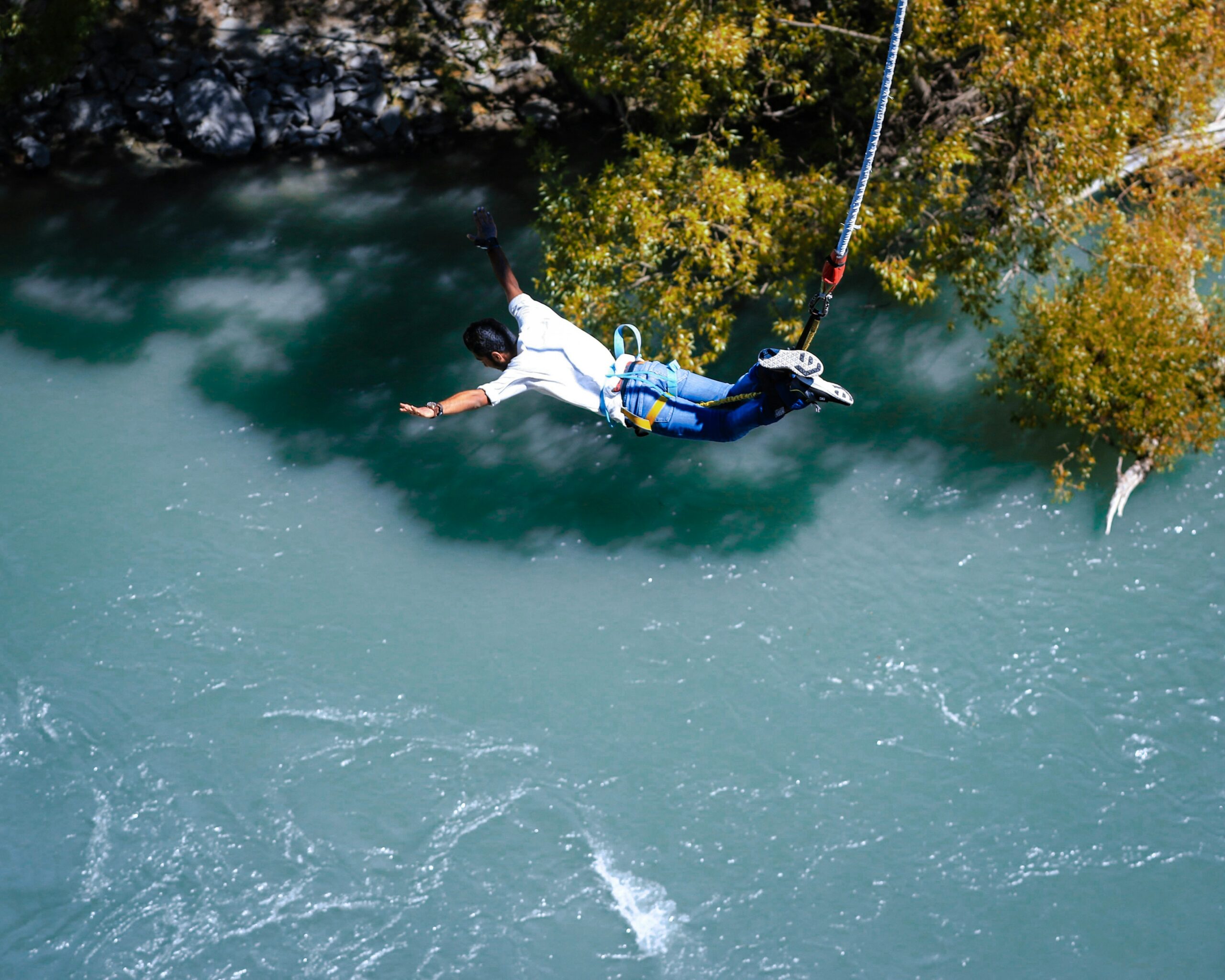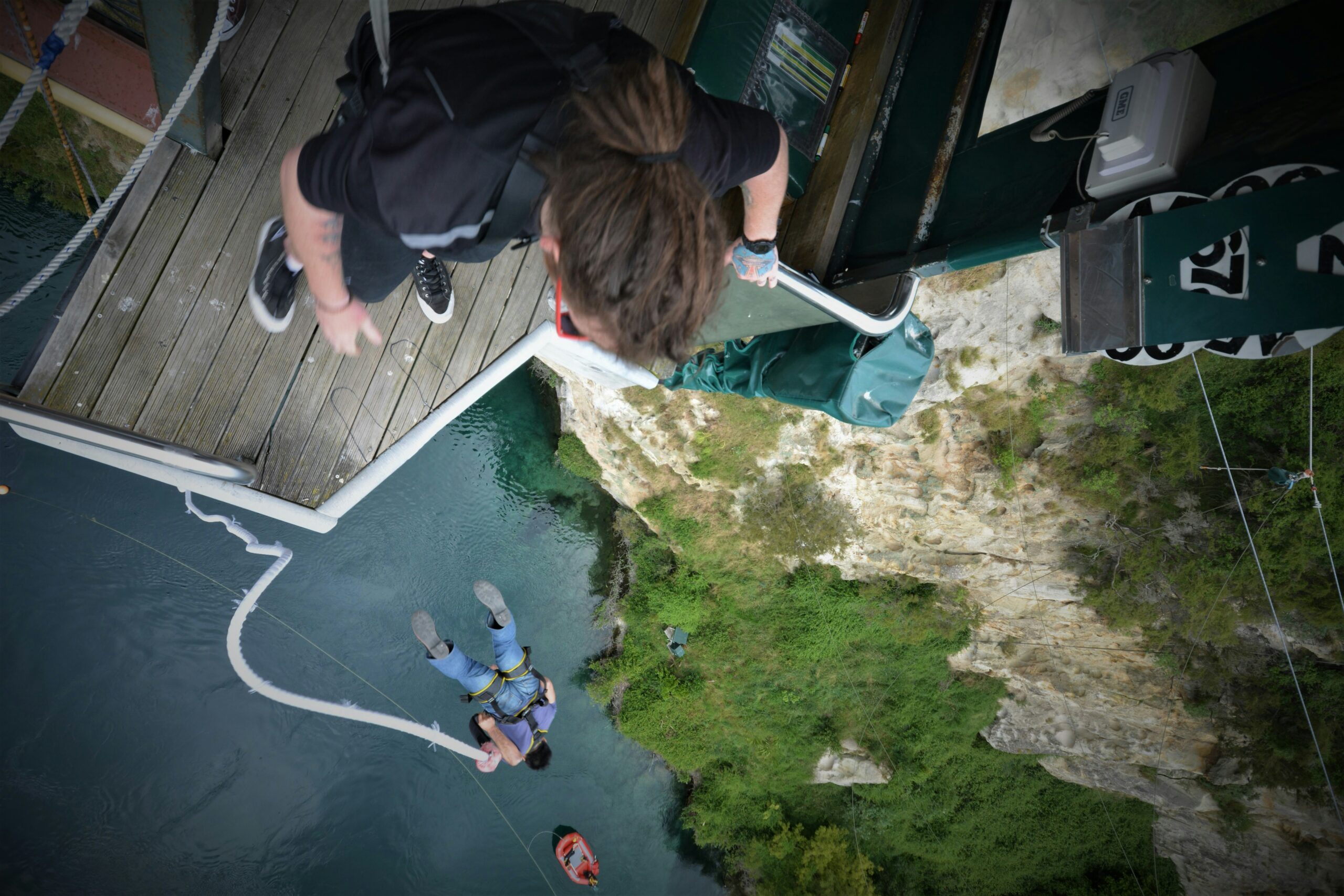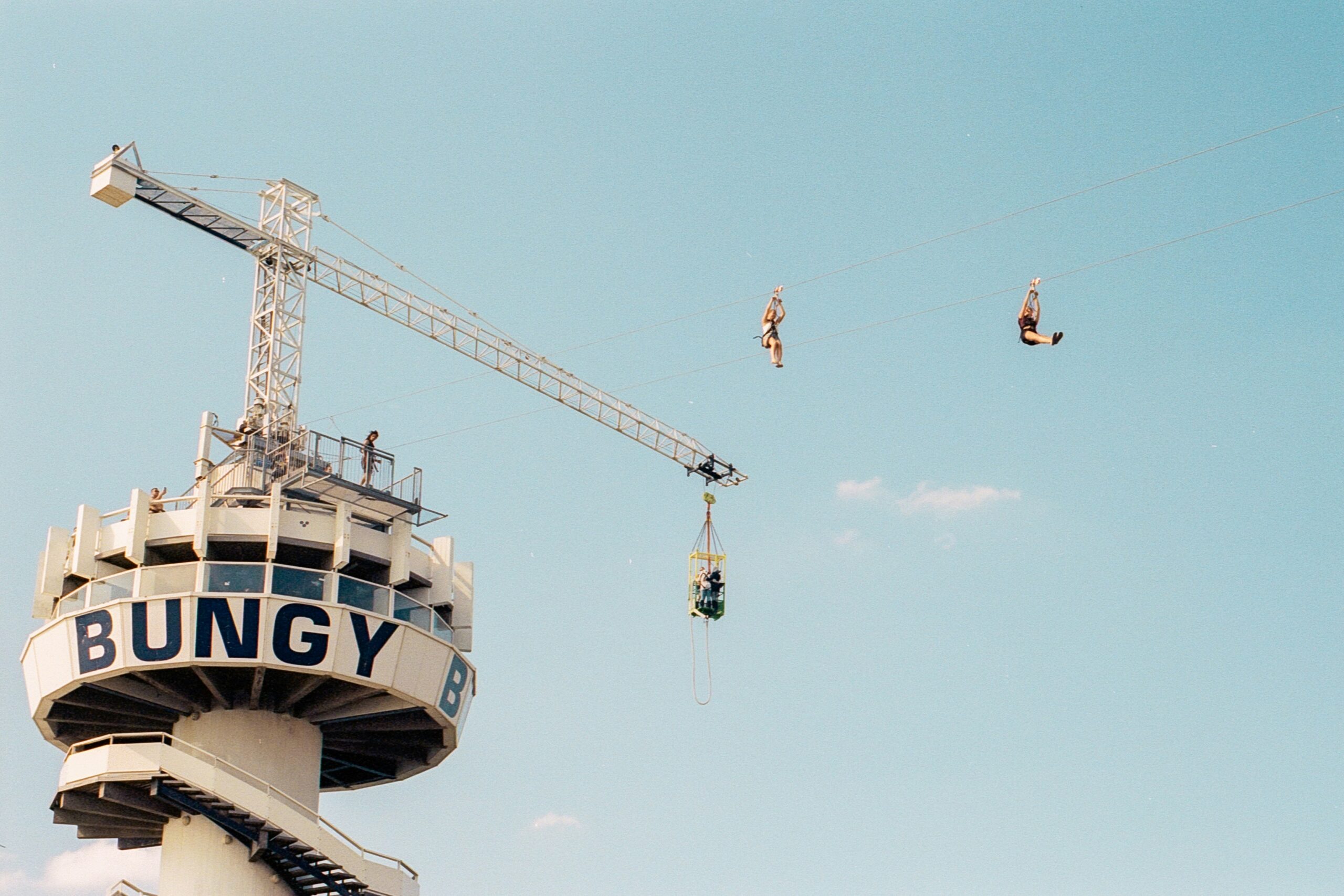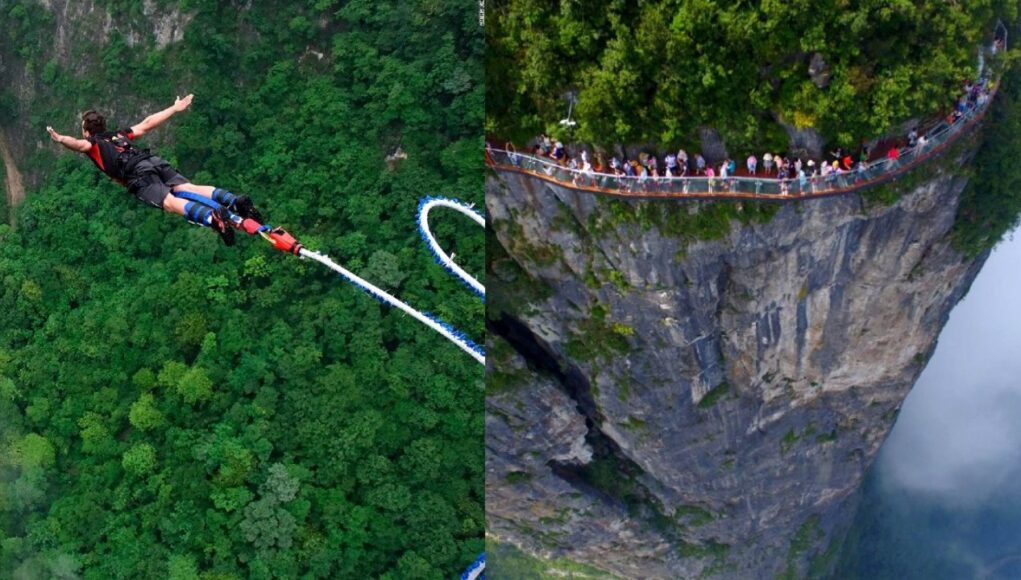Imagine standing on a ledge hundreds of meters above ground, feeling the air rush past, and then letting go. Therefore, this blog post combines the ultimate rush of sheer height with the emotional payoff of the world’s most-loved jumps. First, we explore five of the highest commercial bungee jumps on earth; next, we will look at what truly transforms a good jump into an unforgettable, favorite experience, complete with an overview of several beloved locations. Ultimately, a great jump involves a blend of immense height, professional safety, and stunning surroundings.
Content List
- Defining “Highest” in Bungee Jumping
- The Top 5 Highest Commercial Bungee Jumps
- Detailed Look at the Highest Jumps
- What Makes a Bungee Jump a “Favourite”?
- Top Favourite Bungee Jumps People Love
- Things to Consider Before You Jump
Defining “Highest” in Bungee Jumping
Before reviewing the list, defining “highest” requires some clarity. Does one measure the height from the platform to the ground, river, or abyss? In addition, is the jump consistently and commercially open? Furthermore, does the jump span water, a canyon, or simply empty air? For the purpose of this list, however, we have focused on commercially available bungee or bungee-like jumps that are regularly accessible, using heights measured precisely from the jump point to the target below (ground, water, or riverbed).

The Top 5 Highest Commercial Bungee Jumps
Consequently, these locations offer the most extreme free-fall experiences based on height.
| Rank | Jump Location | Height | What Makes It Special |
|---|---|---|---|
| 1. | Zhangjiajie Glass Bridge, China | ~ 260 meters | Many sources currently consider this the highest regular bungee jump in the world. Set in a dramatic canyon, it provides sweeping views and a very dramatic drop. |
| 2. | Macau Tower, Macau, China | 233 m | One of the most famous bungee jumps. Managed by AJ Hackett, this tower jump gives jumpers a huge free fall over the city skyline before the cord catches them. |
| 3. | Kushma / Kaligandaki Gorge, Nepal | ≈ 228 m | Nature takes the stage here. Notably, this jump is built over a natural canyon, so instead of concrete dams or bridges, wild rugged terrain surrounds the jumper. |
| 4. | Verzasca (Contra) Dam, Switzerland | 220 m | It gained fame as the dam in James Bond: GoldenEye. The setting is beautiful—the Swiss Alps, crystal water, and clean air. Consequently, the jump is truly iconic. |
| 5. | Bloukrans Bridge, South Africa | 216 m | This is Africa’s highest bridge bungee. Spectacular scenery, with a river gorge below and forested views, combines the height and the setting to make it one of the most popular extreme jumps. |
Detailed Look at the Highest Jumps
Indeed, each of the top jumps provides a unique experience for the adventurer.
- Zhangjiajie Glass Bridge: The jump forms part of the glass-bridge structure spanning a canyon. Views are great, but for some people, looking through glass at the abyss adds another layer of fear.
- Macau Tower: As a tower jump, it features a more purely vertical drop compared to bridge or dam jumps. Logistically, moreover, it’s also easier to reach than remote gorges, and the location has very developed safety systems.
- Kushma / Kaligandaki, Nepal: The setting is remote, wild, and incredibly scenic. Therefore, if you love nature as much as the jump itself, this destination is for you.
- Verzasca Dam: This destination offers beautiful engineering and great souvenir value (especially for movie fans). Clearly, the dam has served as a classic jump spot for decades.
- Bloukrans Bridge: Bridge jumps feel different from towers or dams. The setting allows room for wind, for scenery, and for that unique “bridge sway” feeling. For those reasons, it remains very popular.
What Makes a Bungee Jump a “Favourite”?
Sometimes a jump at “only” 150 meters in a beautiful canyon feels more powerful than a taller one in a city. People’s stories, consequently, suggest several elements often turn a good jump into a great one. These key factors include incredible scenery—such as gorges, waterfalls, cliffs, or rivers—and, equally important, a strong safety reputation with professional operators. Furthermore, the buildup to the jump, including the access and the view from the platform, certainly elevates the experience. Friendly and supportive staff always make a difference, as well. Finally, good “after jump” features, like photos and videos, and a memorable emotional payoff—overcoming fear, a rush of adrenaline, and a feeling of pride—cement the jump as a favorite.

From what people share, therefore, favourite jumps have common threads:
- High visual drama: Jumpers prefer gorges, waterfalls, big drops with a visible bottom, a river, or a spectacular skyline.
- Top-notch staff and safety: People often mention feeling nervous; thus, great operators make the difference.
- Memorable surroundings and build-up: Getting there becomes part of the experience—views along the way, a long approach, or dramatic cable cars.
- Emotional high: The fear gives way to adrenaline, followed by relief and pride. Significantly, many say the moments after the jump are as memorable as the jump itself.
“Once in a lifetime experience! Do it and face the fear!” — Jumper on Bloukrans Bungy (Tripadvisor)
“During our semester abroad … the experience was incredible. You can hardly describe it … just have to experience it yourself.” — Jumper on a favorite jump (Tripadvisor)
Top Favourite Bungee Jumps People Love
Accordingly, the following jumps frequently appear in people’s “best ever” lists and reviews because of the overall experience, not just the height.
| Jump Location | What People Love About It | Memorable Things / Highlights |
|---|---|---|
| Bloukrans Bridge, South Africa | Reviewers consistently praise the professionalism, safety, dramatic gorge views, staff energy, and sheer sense of scale. | Many find the scenery unforgettable. Operators make even nervous jumpers feel supported. Moreover, the video/photos are often excellent. |
| The Nevis Bungy (Queenstown, New Zealand) | The build-up alone feels special: one travels up remote mountain roads, crosses valleys, and rides a cable-car-type pod. As a result, the setting feels wild, isolated, and dramatic. | The free fall is long, surroundings are beautiful, and people often say it’s scary in the best way. Consequently, the atmosphere adds a lot beyond the height. |
| Victoria Falls Bridge, Zambia/Zimbabwe | This jump offers a high sensory experience: the roar of the falls, the river far below, and the dramatic border-bridge location. Hence, people describe it as more than a jump—it feels almost spiritual. | The falls, the mist, the sound—the experience is immersive. This jump inspires people to share stories: “You could hear the river, see the spray…” |
| Verzasca Dam (Contra Dam), Switzerland | For many, this remains the “James Bond” jump—iconic and cinematic. The setting in the Alps provides clean air, great views, and a sense of both danger and beauty. | Jumping off a massive dam wall offers a unique feeling. People love the contrast: concrete engineering plus the natural environment plus the drop. In addition, the history adds appeal. |
| Skypark Cairns, Australia (by AJ Hackett) | Users often mention how well run the park is, how attentive the staff are, the safety, the amazing surroundings (rainforest, ocean views), and its accessibility. | For many travelers, this location hits the sweet spot: enough height and thrill but not so remote that logistics kill the joy. Finally, it is also good for repeat jumps. |
 Things to Consider Before You Jump
Things to Consider Before You Jump
Thorough preparation ensures a great jump experience. Always check the safety standards; after all, just because a jump is high does not mean it is inherently risky—if properly regulated. Therefore, check operator credentials, inspect equipment, and ask about cable and harness maintenance. Next, consider acclimatization and health; at ~200–300 meters, you will have seconds of free fall, then rebound. If you have heart conditions, high blood pressure, etc., consequently, get medical advice. Weather (wind, rain, visibility) can make a big difference; thus, some jumps close in bad weather. Cost and access also matter; as an example, remote jumps tend to cost more for travel and lodging and may require booking in advance. Finally, ensure mental preparation. The fear usually comes from anticipation, not the falling itself. Therefore, take time, watch others jump, and breathe.











